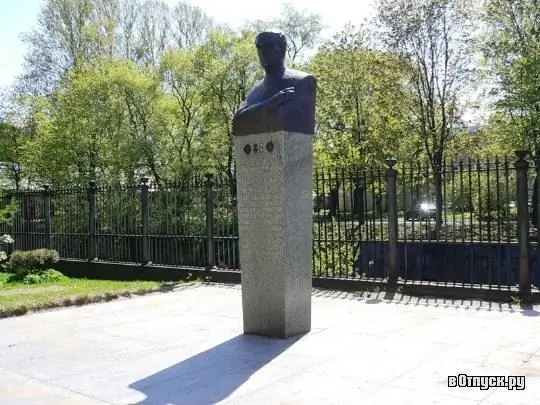
Description of the attraction
On June 18, 1979, between the Soviet and Pedestrian bridges, in the Soviet Park, a solemn ceremony was held to unveil a monument to one of the most remarkable people in the city of Kronstadt - a prominent Soviet physicist, twice Hero of Socialist Labor, a full member of the Academy of Sciences, Nobel Prize winner Kapitza Petr Leonidovich (1894-1984).
The hero of the occasion was not present at the unveiling of the monument, because for health reasons he could not come to Kronstadt, but his sons, who are also famous scientists, took part in the ceremony.
A year later, Petr Leonidovich managed to come to the city and look at the monument erected in the Hero's homeland (according to tradition). It was then that he showed all the guests where the house in which he lived during his childhood was located. From here little Petya Kapitsa went to the gymnasium. The road passed through Anchor Square, and the boy saw how the Naval St. Nicholas Cathedral was being built.
Studying at the gymnasium was not given to the gymnasium student Kapitsa, and he was expelled for academic failure. After that, Peter entered the Kronstadt Real School, from which he graduated with only "five" marks. After college, Petr Leonidovich entered the St. Petersburg Polytechnic Institute, then - at the Cavendish Laboratory of Cambridge University under the direction of Ernest Rutherford (1871-1937), whom Kapitsa considered the greatest scientist and leader of one of the most progressive scientific schools of his time. It was Rutherford who created the planetary model of the atom.
P. L. Kapitsa lived in England for ten years. And already there he became a famous scientist in the field of physics. When Petr Leonidovich returned to Russia, his teacher, Ernest Rutherford, managed to obtain permission to redirect all equipment for experiments with strong magnetic fields from the Cavendish laboratory to the scientist's homeland. It should be noted that P. L. Kapitsa, in order to be one hundred percent sure of the complete purity of the experiments, created the most important parts for his instruments with his own hands. Therefore, the great scientist had to be a turner, a locksmith, a gas cutter, and a milling cutter.
In 1934 P. L. Kapitsa holds the post of director of the Institute of Physical Problems of the Academy of Sciences of the Soviet Union, and thus, the unusually fruitful work of the great scientist is proceeding very successfully. This was especially felt during the Second World War, when many difficult problems had to be solved, which, thanks to the great knowledge of the academician and his students, were successfully eliminated.
Until now, it was believed that the scientist Pyotr Leonidovich Kapitsa was born in the house, the location of which he himself indicated when he arrived in Kronstadt in the summer of 1980. But not so long ago, thanks to the research of local historians of Kronstadt, it was found out that the building in which the scientist was born is located on Posadskaya Street, and has survived to this day. The father of Academician Kapitsa, Leonid Petrovich Kapitsa, was an excellent military engineer and actively participated in the construction of concrete forts of the Kronstadt fortress, the construction methods and type of which were from Russian fortification science and were a new word in military technology of those years.
Despite his worldwide fame, Academician Pyotr Leonidovich Kapitsa always remained a Kronstadt. The best features of the Kronstadt character sat so deeply in him that he could not change until the end of his days. He was always honest, including himself, truthful, open, subordinate to a sense of duty, courageous if the question was about benefits for people and society.






